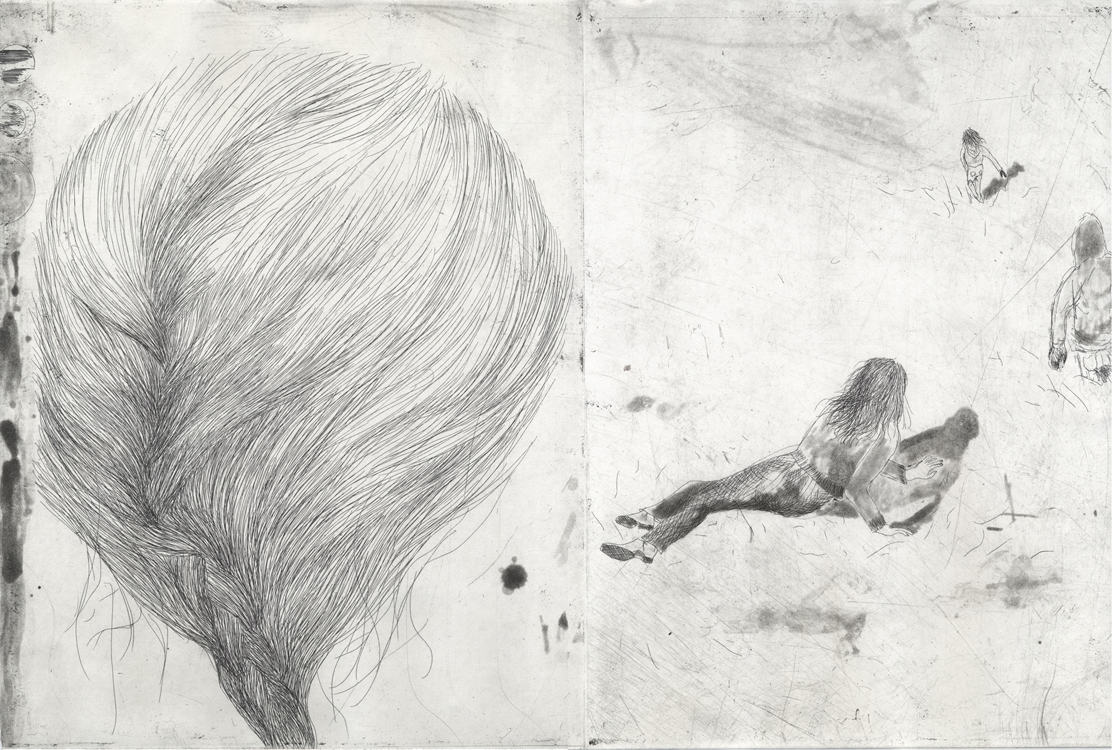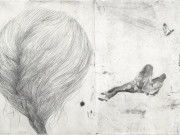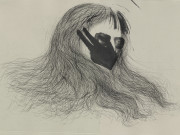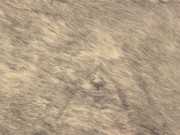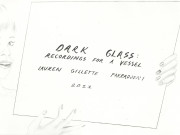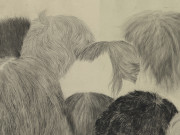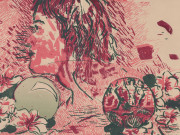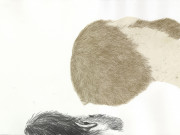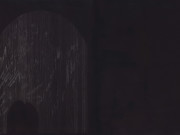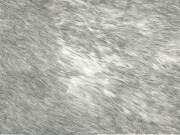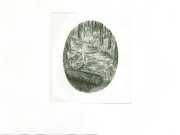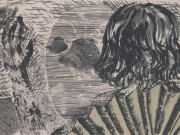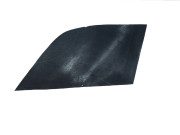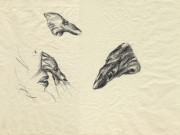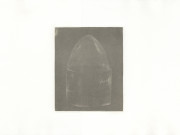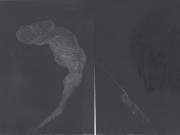Dark Glass: Recordings for a Vessel is a reflection on the history and processes of printmaking and its relationships to ideas of framing, isolating, and representing the world. I frame, isolate, and obscure the subjects in my work to make structure of my images both what is seen and what is not there. I am transfixed by situations in which a clearly composed viewpoint is presented to the viewer, but the focal point is obscured or obstructed. This obstruction is in various ways a frequent subject of my work. Objects such as mirrors, windows, and peepholes are established places of viewing, from which we are aware that crucial information is isolated to a specific space or spaces unavailable to the viewer. The vignettes are familiar but rendered unsettling through isolation or obfuscation of information by the limited and framed pictorial space. There is loss and separation in the individual images, as well as in how the entire body of work operates as a whole, a visual storybook. Various ideas of distance and seeing; such as perspective, introspection, observation, and reflection, yield a range of images that have both a microscopic and macroscopic point of view.
I reference the structure and history of print methods to reflect on ideas of framing. Plate marks, remarques and bleed prints are tools to establish different types of framing in which space is divided, isolated, or taken to the edge of the paper. The matrix is itself a reflective surface, in which the world I render is presented in a mirror image. Printmaking as a medium has a history that reflects and re-interprets the world, particularly in reproducing paintings and artifacts to be dispersed as informative simulacra of works of art. In this series, I use these same printmaking methods to complicate, fracture, and filter the very notion of representing the world, in which I engage in a process that embraces the medium as it actively goes about questioning representation itself.
